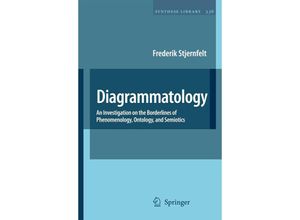Diagrammatology investigates the role of diagrams for thought and knowledge. Based on the
general doctrine of diagrams in Charles Peirce's mature work Diagrammatology claims diagrams
to constitute a centerpiece of epistemology. The book reflects Peirce's work on the issue in
Husserl's contemporanous doctrine of categorial intuition and charts the many unnoticed
similarities between Peircean semiotics and early Husserlian phenomenology. Diagrams on a
Peircean account allow for observation and experimentation with ideal structures and objects
and thus furnish the access to the synthetic a priori of the regional and formal ontology of
the Husserlian tradition.The second part of the book focuses on three regional branches of
semiotics: biosemiotics picture analysis and the theory of literature. Based on
diagrammatology these domains appear as accessible for a diagrammatological approach which
leaves the traditional relativism and culturalism of semiotics behind and hence constitutes a
realist semiotics.



